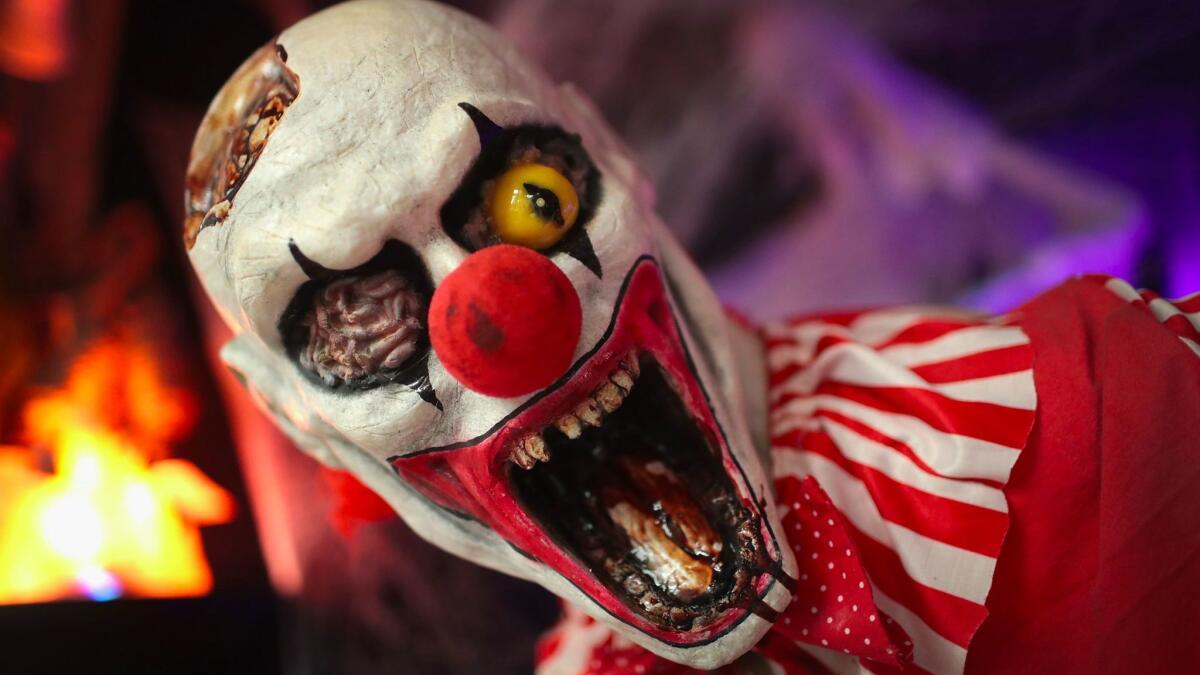A neuropsychiatrist explains why we crave fear

Each Halloween, we are reminded that we are a nation divided.
Some of us think going to an amusement park and being chased by people dressed as zombies is a really fun way to spend a Saturday night.
Others think that sounds like torture.
So why do some people love to be scared, while others find it so frightening?
Katherine Brownlowe, a neuropsychiatrist and head of the division of neurobehavioral health at Ohio State Medical Center, said it has to do with how our brains are wired.
“We are all born with different personalities and temperaments, and from the get-go, some of us are more daredevil risk-takers than others,” she said.
For those who enjoy being scared, the experience of watching a horror film can ultimately help the body and brain relax after the initial adrenaline rush, she explained.
On the other hand, those of us who hate being scared are likely to replay scary scenes in our head long after the film has ended, unable to keep these intrusive thoughts at bay.
Brownlowe spoke to The Times about where fear originates in the brain, why some of us crave it and how to get scary images out of our heads.
Is there a clinical definition of fear?
Fear is an experience that is physical and emotional. The physical fear response usually involves increased heart rate, increased rate of breathing and increased blood pressure. Emotionally and cognitively, there is a heightened attention level, colors are brighter and things are a little more clear and in focus.
What’s going on in our brains when we’re scared?
There are two systems in our brains that cause us to have fears or anxieties.
One is in the amygdala, which is in the temporal lobe right under the temples on the side of your face. It’s a structure both animals and humans have. It’s the part that activates when you are walking along and see a spider or a snake — that initial WHAA! that gives you the cascade of brain alertness, heart rate increase and goosebumps.
At the same time, in humans, there is a function of fear and anxiety that is mediated by the frontal lobes. This is the part of the brain that gives us consciousness. This system can increase a fear response when you are in a situation that could be dangerous, like walking down a dark alley and hearing someone behind you. It can also turn down a fear response if the brain knows it is in a situation that is safe, like a haunted house.
So why do some people enjoy being scared and others don’t?
Some people’s brains are just set up so they don’t find the experience of being scared to be negative or they need more heavy stimulus to generate a fear response.
There is also an additional overlay of personal experience — things you’ve learned from your family while growing up. Also, someone who has been traumatized is less likely to enjoy things that are fearful.
Are there any benefits to being scared?
There are. Often when people are done being scared, their bodies are more relaxed. We have hormones and neurotransmitters that turn the volume up when we’re frightened, but once a person is no longer in a scary situation, there is a counter-balance system that calms things down. The muscles relax. The heart rates go down. The brain relaxes.
Personally, I struggle with getting scary images out of my head.
That’s the consciousness thing again, in your frontal lobes. It’s similar to what happens when someone sees something traumatic. Those thoughts can continue to be intrusive and problematic even after some reasonable time has passed.
What can you do if you’ve watched a scary movie and now you can’t sleep?
Reminding yourself it wasn’t real will help you get perspective on it and allow your frontal lobes to calm down the amygdala and that anxiety response.
You can also try mindfulness techniques like breathing exercises and progressive muscle relaxation. These techniques are designed to take people out of their heads and get them back to reality and what’s actually around them.
Is there anything harmful about repeatedly putting ourselves in situations that trigger the fear response?
As long as you are enjoying it, there’s nothing wrong with it. The only problem is when someone is such a sensation seeker that they put themselves at risk for the rush. People with physical damage in the amygdala don’t do a good job of keeping themselves safe because their brains don’t make that fear signal.
Do you love science? I do! Follow me @DeborahNetburn and “like” Los Angeles Times Science & Health on Facebook.
MORE IN SCIENCE
Can too much Halloween candy kill you? This is how much it would take
Brown pebble turns out to be first known fossilized bit of dinosaur brain
Who needs land? These birds spend 10 months of the year in flight




